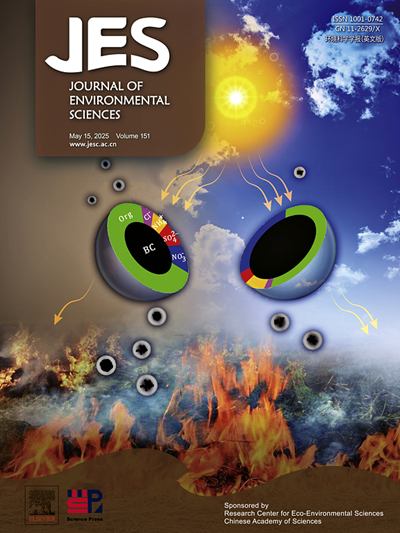Impact of biochars on CO2 emissions and physic-chemical properties in Malaysian Tropical soils: Factor analysis and weighted contribution
IF 5.9
2区 环境科学与生态学
Q1 ENVIRONMENTAL SCIENCES
引用次数: 0
Abstract
Global climate change is the most serious challenge that modern society faces. Soil-biochar carbon sequestration is a promising natural solution for capturing carbon. This study monitored the CO2 emissions of five biochar incubated Malaysian Tropical soils (MT-Soil). The recalcitrance index of palm kernel shell biochar (PKS) was higher than that of wood chip biochar (WCB), bamboo biochar (BB), coconut shell biochar (CHB) and rice husk biochar (RHB), and was different from the observed CO2 emission characteristics (WCB > CHB > RHB > BB > PKS). Thus, the carbon sequestration potential of biochar could not be evaluated solely by the recalcitrance index. This CO2 emission is linked not only to the total organic carbon (TOC) and total carbon (TC) of the biochar but also associated with mobile matter (MM), water holding capacity (WHC), available phosphorus (AP), exchangeable potassium (AK), and nitrogen content. The multiple linear regression analysis (MLRA) shows that the weights of these factors on CO2 emissions are as follows: TC > pH > MM > WHC > AP > AK. The results show that in addition to biochar stability, pore structure and available phosphorus release also affect carbon dynamics through indirect effects on microbial activity. This means that to minimize CO2 emissions during application of biochar, it is necessary to use soil that is rich in phosphorus and biochar that has undeveloped pore structure and high stable carbon. Finally, this study provides valuable theoretical underpinnings biochar application in MT-Soil.

生物炭对马来西亚热带土壤CO2排放和理化性质的影响:因子分析和加权贡献
全球气候变化是现代社会面临的最严峻挑战。土壤生物炭固碳是一种很有前途的碳捕获自然解决方案。本研究监测了5种生物炭培养的马来西亚热带土壤(MT-Soil)的二氧化碳排放。棕榈仁壳生物炭(PKS)的抗阻指数高于木屑生物炭(WCB)、竹材生物炭(BB)、椰子壳生物炭(CHB)和稻壳生物炭(RHB),且与观测到的CO2排放特性(WCB >;慢性乙肝的在RHB祝辞BB祝辞PKS)。因此,生物炭的固碳潜力不能仅用顽固性指数来评价。这种CO2排放不仅与生物炭的总有机碳(TOC)和总碳(TC)有关,而且与流动物质(MM)、持水量(WHC)、有效磷(AP)、交换性钾(AK)和氮含量有关。多元线性回归分析(MLRA)表明,各因素对CO2排放的权重分别为:TC >;pH值比;毫米的在在通车;美联社在正义与发展党。结果表明,除生物炭稳定性外,孔隙结构和有效磷释放也通过间接影响微生物活性来影响碳动态。这意味着为了在生物炭的施用过程中最大限度地减少二氧化碳的排放,必须使用富含磷的土壤和孔隙结构不发达、碳稳定度高的生物炭。最后,本研究为生物炭在MT-Soil中的应用提供了有价值的理论基础。
本文章由计算机程序翻译,如有差异,请以英文原文为准。
求助全文
约1分钟内获得全文
求助全文
来源期刊

Journal of Environmental Sciences-china
环境科学-环境科学
CiteScore
13.70
自引率
0.00%
发文量
6354
审稿时长
2.6 months
期刊介绍:
The Journal of Environmental Sciences is an international journal started in 1989. The journal is devoted to publish original, peer-reviewed research papers on main aspects of environmental sciences, such as environmental chemistry, environmental biology, ecology, geosciences and environmental physics. Appropriate subjects include basic and applied research on atmospheric, terrestrial and aquatic environments, pollution control and abatement technology, conservation of natural resources, environmental health and toxicology. Announcements of international environmental science meetings and other recent information are also included.
 求助内容:
求助内容: 应助结果提醒方式:
应助结果提醒方式:


